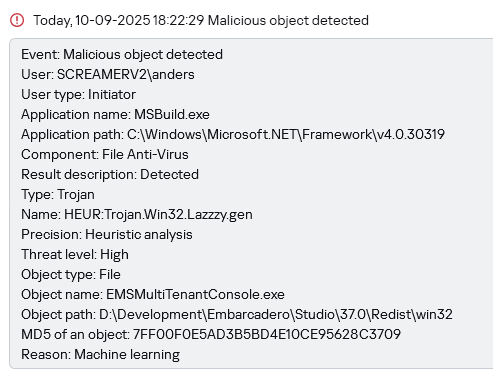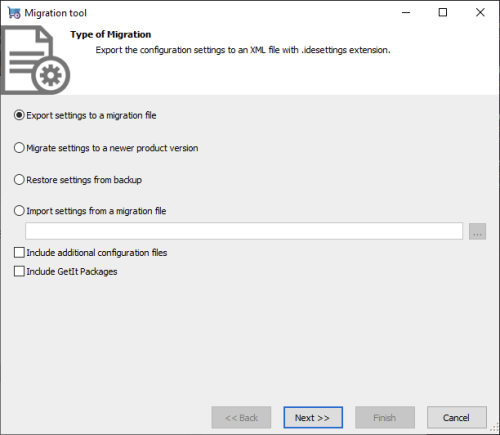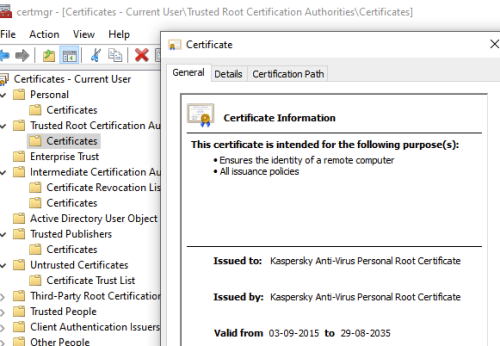-
Content Count
2946 -
Joined
-
Last visited
-
Days Won
166
Posts posted by Anders Melander
-
-
minutes ago, dwrbudr said:What do you think is the safest fix?
Fix or work-around? The safest work-around is to not call TBitmap.SaveTo* more than once on the same bitmap:
bmp.Assign(png); bmp.SaveToFile('out_1.bmp'); bmp.Assign(png); bmp.SaveToFile('out_2.bmp');
I would guess (I would need to examine the logic more than I have time for, to be sure) the quick-fix is to modify TBitmap.WriteStream so it only counts the palette size once:
if (FDIB.dsbmih.biBitCount > 8) and (FDIB.dsbmih.biClrUsed = 0) then begin // optional color palette for hicolor images (non OS2) Inc(Size, ColorCount * SizeOf(TRGBQuad)); Inc(HeaderSize, ColorCount * SizeOf(TRGBQuad)); end;
but to be honest, if this was my code, I would throw out the current TBitmap.WriteStream implementation and rewrite it from scratch. It's a horrible mess.
-
 1
1
-
-
Here's the algorithm used when saving a TBitmap:
- Calculate Size based on HeaderSize, the number of pixels, color depth, and current value of BitmapInfoHeader.biClrUsed (number of entries in the palette).
- Calculate number of entries in the palette: ColorCount
- Adjust Size with the value of ColorCount: Size := Size + ColorCount * SizeOf(Pixel)
- Set BitmapFileHeader.bfSize = Size
- Write BitmapFileHeader to file
- Set BitmapInfoHeader.biClrUsed = ColorCount
- Write BitmapInfoHeader to file
- Write palette entries
- Write pixels
BitmapFileHeader is a local variable that is nilled and initialized each time. BitmapInfoHeader is a class variable that is used to store the bitmap properties.
Can you spot the bug?
The first time the bitmap is saved, BitmapInfoHeader.biClrUsed=0.
The second time the bitmap is saved, BitmapInfoHeader.biClrUsed=ColorCount, so the palette size is counted twice.
-
 1
1
-
3 minutes ago, GabrielMoraru said:Did they fixed that tool in the end?
I think it has always worked. It was just near impossible to understand how to use it.
I used it for D11->D12 and D12->D13. Each time I had to do it a few times before I got it right.
-
 1
1
-
 1
1
-
-
-
2 hours ago, Lars Fosdal said:Basically, it is making things as readable as possible
Kudos on managing to avoid the one style we can all read.
1 hour ago, dummzeuch said:Rename an identifier (that one always worked fine within a single unit and most of the time even for the whole project)
Rename across units have never worked for anything but the most trivial code (okay, maybe in the first couple of versions). And without that it's useless. I can manage rename in a single unit on my own, without the help of refactoring (but of course I wouldn't mind it).
16 minutes ago, Stano said:It's been mentioned several times. These things are handled by MMX. And good.
MMX doesn't have rename refactoring.
I haven't got it installed anymore, so I can't verify, but every time I install it it's because I need rename refactoring and every time I discover that it can't do it properly and uninstall again.
What you are referring to as "rename refactoring" is just a text search/replace in MMX.
-
 1
1
-
-
55 minutes ago, Mark NZ said:just moving the mouse past the menu option not fast enough caused minute+ freezes, that was VERY frustrating for me when debugging and trying to jump to statement.
I share that experience - but it was an optional component so you could have just chosen not to install it.
-
I think we all have this problem.
Version control helps but it's still annoying.
-
 1
1
-
-
10 minutes ago, Chris1701 said:I worked out how to fix the Popup menu width problem
and...?
-
 1
1
-
-
9 hours ago, Dalija Prasnikar said:function TBaseFoo.BrokenFoo: IFoo; var LOwner: TComponent; begin Result := nil; if Supports(Self, IFoo) then Result := Self as IFoo else LOwner := Owner; // if block execution will continue here !!!! while LOwner <> nil do begin if Supports(LOwner, IFoo) then begin Result := LOwner as IFoo; Break; end else LOwner := LOwner.Owner; end; end;I know the actual implementation wasn't the point, but I just can't leave code like that unchallenged. It haunts me.
function TBaseFoo.BetterFoo: IFoo; var Item: TComponent; begin Result := nil; Item := Self; while (Item <> nil) and (not Supports(Item, IFoo, Result)) do Item := Item.Owner; end;
-
 2
2
-
-
33 minutes ago, Dave Novo said:Of course I understand the Claude code snippet. It is pulling the info from the About box. What is not to understand?
I think we have a case of tunnel vision here.
Extracting the version number from the About Box is obviously not the way to do it; There's no contract that specifies how the returned string is formatted and if they change the format, the code breaks.
"Delphi 14.0 Version 12.34.567.890 by Embarcadero®"
The solution is really, really simple and does not involve the ToolsAPI at all:
- Assuming this is being done from a package or a DLL, use GetModuleFilename to get the filename of the host application (i.e. bds.exe).
- Use GetFileVersionInfo to get the version info.
-
1 hour ago, Dave Novo said:This is what Claude said. No idea if its true or not since I have never looked into this
Just like GPS navigation systems made people forget how to find direction, apparently AI has made people forget how to think for themselves 🤔
From where do you think the about box gets its version number information?.
-
1 hour ago, Patrick PREMARTIN said:The reason is simple : it's disabled for Delphi (but can be used by IDE plugins or for next update or release)
It should have been hidden for Delphi. Having it visible but but disabled, with no way to make it enabled, is just confusing; Poor UI design.
-
 3
3
-
-
1 hour ago, david berneda said:Manual formatting for me is the best way to make sure the code is well done, calmly, as a final double-check there are no big bugs or something missing.
That's nice. If I send you this 800.000 line legacy project I need to clean up, when can you have it ready for me? 🙂
It was written by someone who apparently had a sporadically stuck shift key, didn't like white space, and couldn't make up his mind if 1, 2, 3, or 8 space indents were the way to go.
-
 1
1
-
 1
1
-
 6
6
-
-
Apart from the AI stuff, you do know how to determine the IDE version and build number, right?
-
3 hours ago, Vincent Parrett said:Yes - applications should not be installing root certificates into windows - the only scenario where I can see this being needed is when using self signed code signing certificates - which is happening more an more in enterprises for internal applications/scripts - especially ones where internet access is limited.
A bit of Googling tells me that the purpose of the certificate is to enable it to scan encrypted HTTPS traffic.
-
5 minutes ago, Kryvich said:It tried to install its root certificate into Windows.
Is that a problem? If so, why?
-
6 minutes ago, Lars Fosdal said:I thought everyone had dropped Kaspersky by now.
Nah. Although I have no love for Russia, I have no beef with Kaspersky (and these days I trust the US just as little) and I've found that it's the one that works best for me. I'm using the free version, FWIW.
-
 1
1
-
-
59 minutes ago, David Heffernan said:Has anyone else seen anything worth talking about?
Well, I got this one during install so I'm already a little bit "excited"...

https://threats.kaspersky.com/en/threat/Trojan.Win32.Lazzzy.gen/
-
1 minute ago, Lars Fosdal said:You obviously can't satisfy everone every time.
But at least you can not satisfy someone every time.
-
 1
1
-
 4
4
-
-
There are so many bugs and limitations in TListView (the Windows control, not the VCL wrapper) that I have found that as soon as I spend more than 10 minutes trying to work around something in it, it's often a better idea to replace it with something else.
Just yesterday I needed the first column in a listview right-aligned; Forgetaboutit - and out it went.
-
6 hours ago, PiedSoftware said:Which version introduced that?
Delphi 11
-
14 hours ago, HeartWare said:but do you really think that a MUL/DIV sequence takes less time than a JMP?
As I said, I haven't timed it - and it depends. MUL is dirt cheap. DIV is a little more expensive but not nearly as bad as it once was. Branches are almost always bad but if OldDPI=NewDPI most of the time then the jump out is obviously worth it.
I honestly wouldn't bother doing this in asm in the first place. Unless you are using it to scale graphics in real-time, or something like that, then it's a completely wasted effort. Also remember that pascal code can be inlined (avoiding the call overhead), while asm functions can't. I would replace the MulDiv with a simple expression; You likely don't need the 64-bit and overflow handling baked into MulDiv (which is a Windows API function, btw - not cheap).
-
4 hours ago, Ian Branch said:Here is the GitHub Repository requested
That's not a fork...
Never mind. Not my problem.
-
1 hour ago, Uwe Raabe said:it is already solved by using version control
Exactly
-
 1
1
-
![Delphi-PRAXiS [en]](https://en.delphipraxis.net/uploads/monthly_2018_12/logo.png.be76d93fcd709295cb24de51900e5888.png)




Error Handling in an application
in General Help
Posted